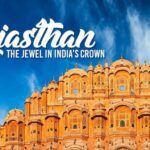Meghalaya, a state situated in northeastern India, is prestigious for its regular excellence, rich social legacy, and plentiful precipitation. The locale encounters an extraordinary appeal during the rainstorm season, which endures from June to September. During this time, Meghalaya becomes a haven for nature lovers and adventurers thanks to its picturesque landscapes, cascading waterfalls, and lush greenery.
Meghalaya experiences heavy rainfall during the monsoon, which transforms the entire area into a lush paradise. Cherrapunjee and Mawsynram, two of the state’s wettest locations, offer visitors a chance to see nature’s bounty in the form of gushing waterfalls, mist-covered hills, and vibrant vegetation. With its mild climate and numerous attractions, Shillong, the capital city, also comes to life during this time.
Notwithstanding its normal marvels, Meghalaya offers a scope of experience exercises, for example, journeying, climbing, and waterway boating. A must-do activity is to explore the region’s only living root bridges. In the midst of the monsoon foliage, these remarkable structures, constructed by interweaving the roots of ancient trees, are an enchanting sight.
In addition, the storm season in Meghalaya isn’t just about nature yet in addition about embracing the nearby culture and merriments. The state celebrates different conventional celebrations during this time, offering guests an opportunity to drench themselves in the lively music, dance, and food of the Khasi, Garo, and Jaintia clans.
To capitalize out traveling to Meghalaya during the rainstorm, it’s critical to be completely ready, pack proper stuff, and adhere to somewhere safe rules. With its enamoring scenes, social variety, and exciting exercises, Meghalaya offers an exceptional and remarkable the travel industry experience during the rainstorm season.
Exploring Meghalaya During Monsoon
A. Cherrapunji: The wettest place on Earth
An overview of Cherrapunjee’s rainfall records:
a. The highest annual rainfall ever recorded is held by Cherrapunji.
b. During the monsoon, the town gets a lot of rain, which makes the landscapes look amazing.
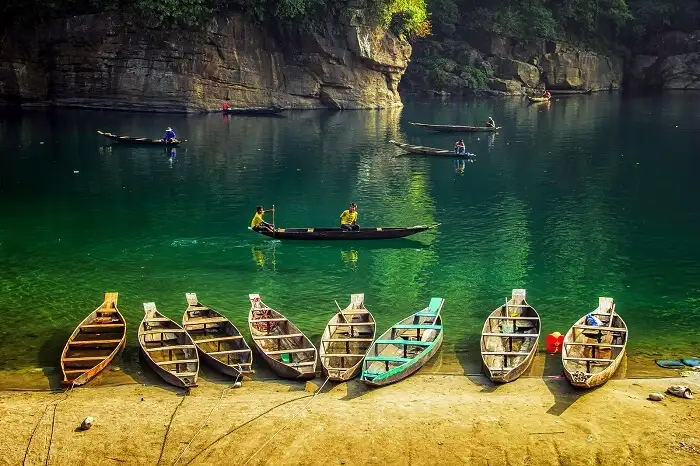
Cherrapunji’s attractions during the monsoon:
a. Nohkalikai Falls: Visit the glorious Nohkalikai Falls, one of the tallest dive cascades in India, which is at its generally sublime during the storm season.
b. Mawsmai Cavern: Take a tour of the limestone Mawsmai Cave, which is famous for its impressive formations and is illuminated by streams fed by the monsoon.
c. Eco Park: From the Eco Park, where the rain enhances the lush greenery, you can take in panoramic views of the valleys and hills that surround you.
Observing the living root bridges surrounded by lush vegetation:
a. Trip to the living root spans in Cherrapunjee, for example, the renowned two layer span and the single-decker span.
b. In the midst of the rain-soaked forests, these one-of-a-kind bridges, made by directing the roots of ancient trees, offer a surreal experience.
B. Mawsynram: Another Precipitation Heaven
Features of Mawsynram’s precipitation insights:
a. Mawsynram holds the record for the most noteworthy typical yearly precipitation all around the world.
b. Experience the genuine quintessence of the storm in this precipitation heaven.
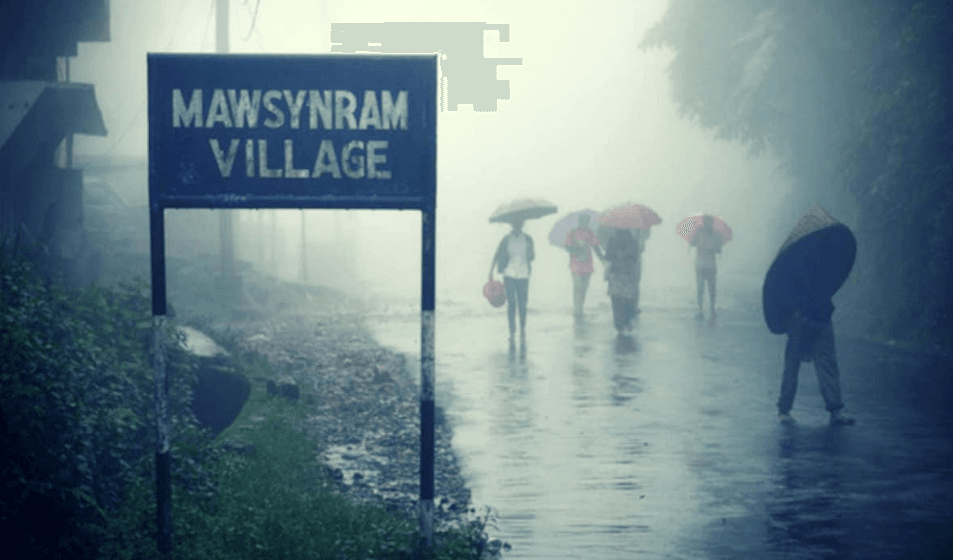
Investigating Mawsynram’s normal miracles during rainstorm:
a. Cave of Mawjymbuin: Visit the Mawjymbuin Cavern, popular for tapered rock developments and a characteristic Shivalinga draws in fans.
b. The Falls of Thlumuwi: Witness the pleasant Thlumuwi Falls, encompassed by lavish vegetation and downpour took care of streams.
c. Rock by Kyllang: Take a hike to Kyllang Rock, a massive granite dome with views of the Meghalayan plateau and monsoon-adorned waterfalls.
C. Shillong: The Capital City
Outline of Shillong’s environment during storm:
a. During the monsoon, Shillong receives moderate precipitation, making it a pleasant location to explore.
b. The city has earned the moniker “Scotland of the East” and is home to a variety of cultural and natural landmarks.

During the rainy season, popular tourist spots in Shillong include
a. The Lake Ward: Take a leisurely stroll around Ward’s Lake, which is surrounded by lush vegetation and vibrant flowers.
b. Wear Bosco Community for Native Societies: In this museum, you can see indigenous art, objects, and customs from Northeast India’s cultural past.
c. Peak Shillong: Partake in an all encompassing perspective on Shillong and its encompassing slopes from the Shillong Pinnacle, particularly dazzling during the storm with fog and downpour kissed scenes.
In Shillong’s lively cafes, you can take in local music and culture:
a. Visit the dynamic bistros and unrecorded music settings in Shillong to encounter the city’s flourishing music scene, frequently alluded to as the “Rock Capital of India.”
b. To get a taste of Khasi culture, try the local cuisine and talk to the friendly locals.
D. Living Root Bridges: A Natural Wonder
a. Take a hike through the rainforest to see the amazing living root bridges that show how creative the local tribes are.
b. The formation of these bridges
Adventure and Activities
A. Waterfalls and Caves Exploration:
Exploring other waterfalls as well as the majestic Elephant Falls:
a. Go to the three-tiered Elephant Falls near Shillong, which are surrounded by lush vegetation.
b. See Bishop Falls, Sweet Falls, and Spread Eagle Falls, which are all breathtaking waterfalls.
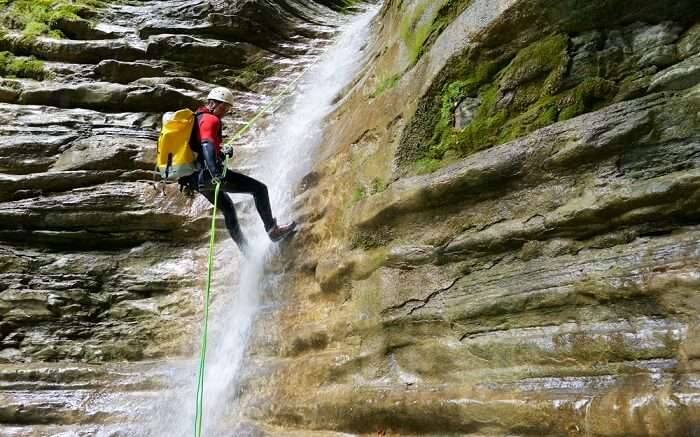
Finding the enchanted caverns of Meghalaya:
a. Investigate the Mawsmai Cavern in Cherrapunjee, known for its noteworthy limestone developments and underground streams.
b. Go to the Siju Cave in the Garo Hills, which has stunning stalactite and stalagmite formations and is one of the longest caves in the Indian subcontinent.
B. Going on hikes and treks:
An overview of monsoon trekking opportunities:
a. Meghalaya’s misty hills and rain-soaked forests can be explored on a trek, providing an unusual and thrilling experience.
b. Take guided treks to remote villages, hidden waterfalls, and scenic viewpoints.

Popular treks and their stunning scenery:
a. David Scott Trail: Travel through picturesque landscapes and villages on the historic David Scott Trail, an ancient route connecting Bangladesh and Assam.
b. Nongkhnum Island Journey: Take a hike to Nongkhnum Island, Asia’s second-largest river island, which is surrounded by the serene waters of the West Khasi Hills.
C. Water Sports and Rafting on the River:
Accessibility of stream boating and water sports exercises:
a. Dawki offers thrilling river rafting experiences in the Umngot River’s rapids, which are surrounded by stunning scenery.
b. Go boating or kayaking in Umiam Lake near Shillong for a peaceful and scenic experience.
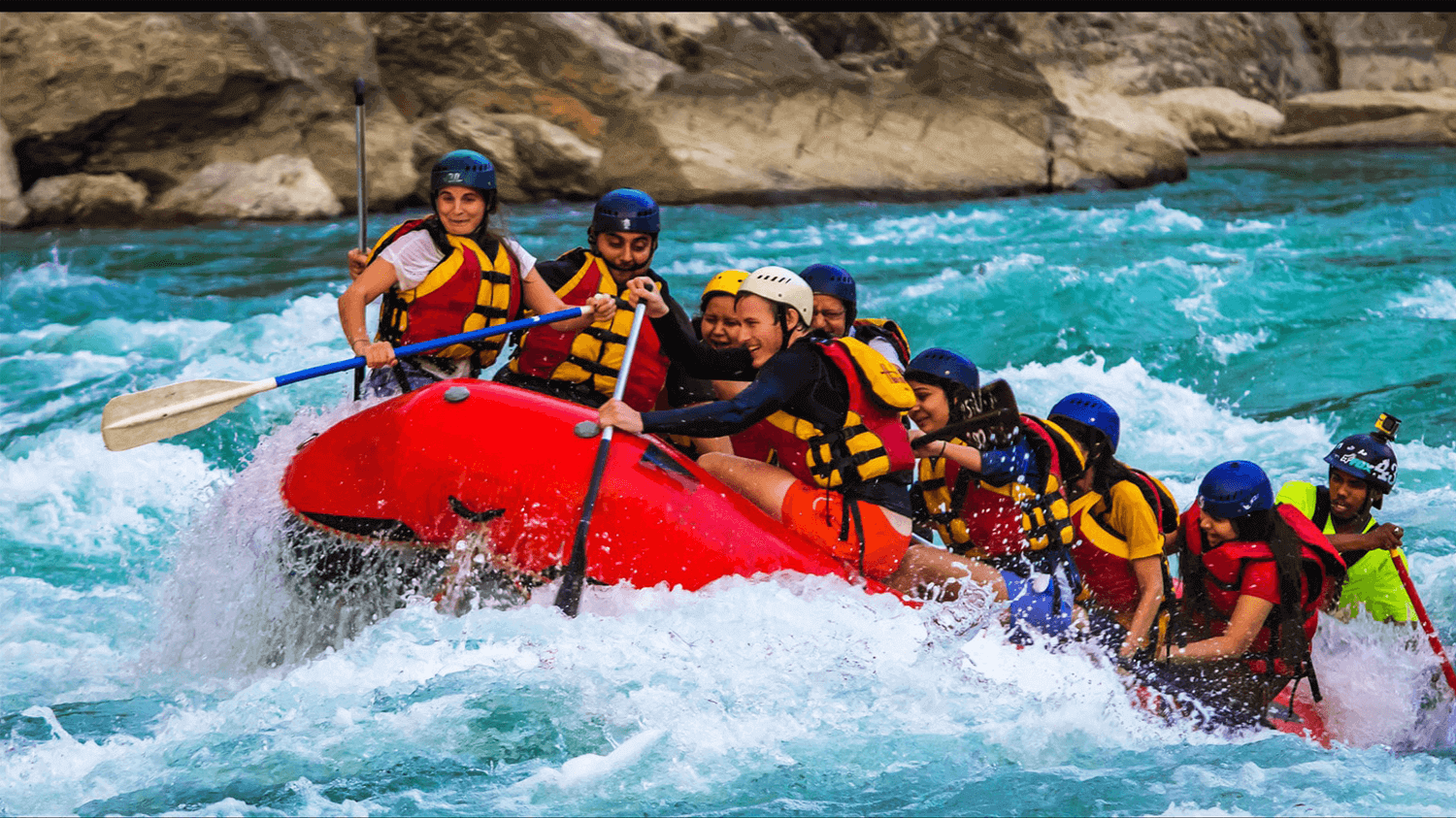
Taking pleasure in the rush of adrenaline amid scenic landscapes:
a. Enjoy experience exercises like zip-lining, rappelling, and rock moving in beautiful areas like Mawphlang and Sohra.
b. Under the direction of experienced instructors, try canyoning and waterfall rappelling, which involves descending down cascading waterfalls.
D. Nature and Wildlife Exploration:
Nokrek Public Park:
a. Investigate Nokrek Public Park, an UNESCO Biosphere Hold, known for its rich biodiversity and interesting species like the Asian elephant and Hoolock gibbon.
b. Look for various bird species, orchids, and medicinal plants on nature walks and jeep safaris.
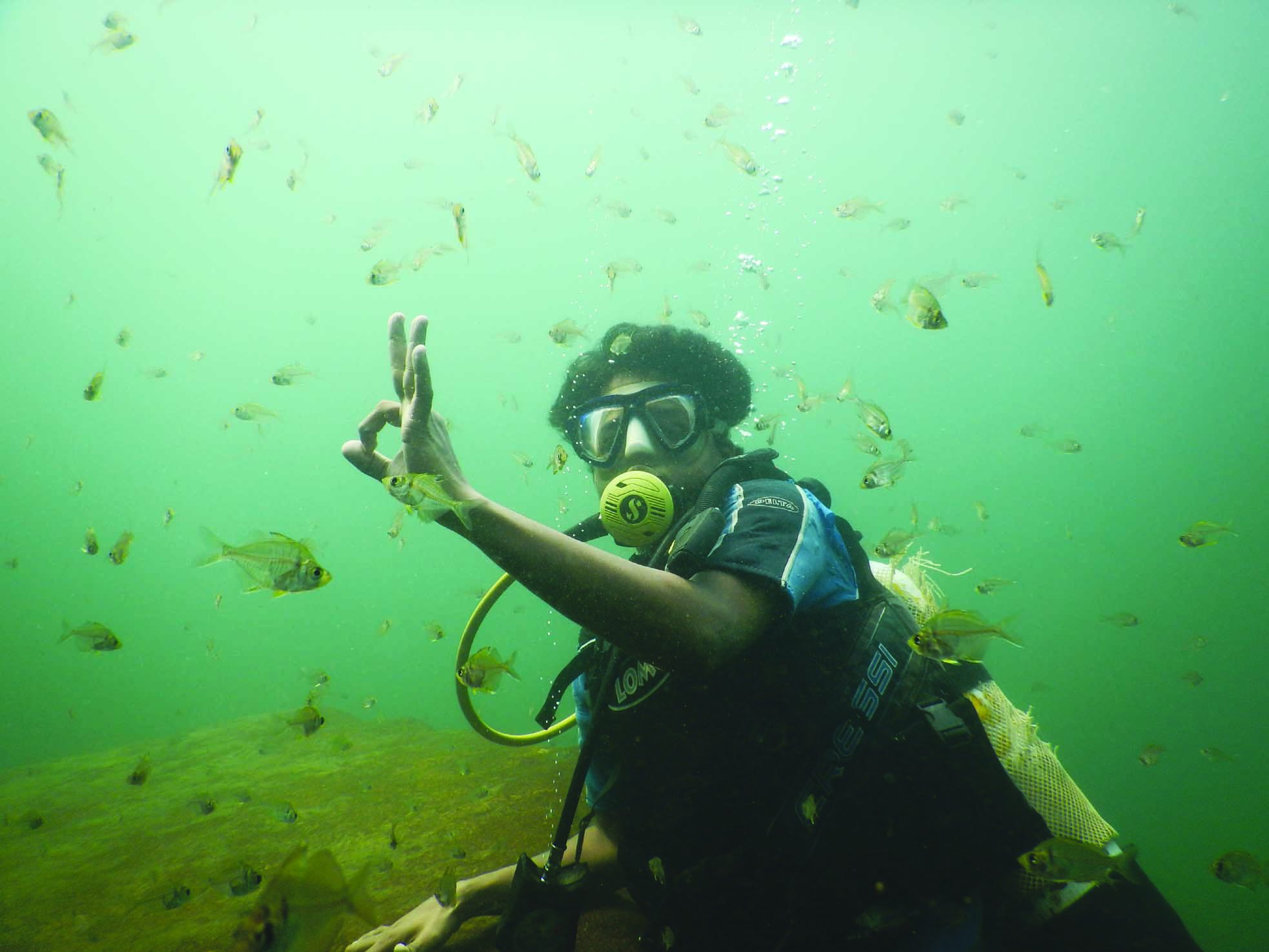
National Park of Balpakram:
a. Visit Balpakram Public Park, home to the interesting and tricky red panda, obfuscated panther, and Indian buffalo.
b. Take a hike through the park’s valleys, plateaus, and dense forests to see the wildlife and natural beauty.
Watching birds:
a. Meghalaya is a haven for birders thanks to its wide variety of avian species.
b. Look for endemic and rare birds at popular birding destinations like Balpakram National Park, Nongkhyllem Wildlife Sanctuary, and Umiam Lake.
The monsoon season in Meghalaya is full of adventure and outdoor activities. From investigating cascades and caverns to journeying across downpour drenched woods, enjoying stream boating and water sports, and submerging oneself in the area’s untamed life and nature, guests can leave on exciting experiences in the midst of Meghalaya’s staggering scenes.
Local Culture and Festivals:
A. Introduction to Meghalaya’s diverse cultural heritage:
There are three major tribes in Meghalaya: Khasi, Garo, and Jaintia, each with its own culture, customs, and languages, are the three tribes.
The tribal communities have a strong bond with the natural world and keep their ancient beliefs and practices alive.
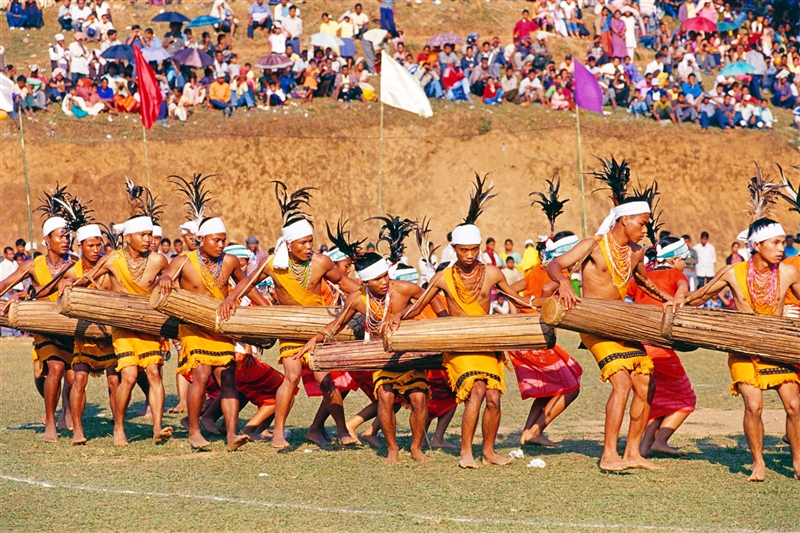
B. Customary celebrations commended during the storm season:
Wangala Celebration: The Garo people group commends the Wangala Celebration, otherwise called the Hundred Drum Celebration, to express gratefulness for a plentiful collect. It highlights lively dance exhibitions, customary music, and brilliant clothing.
Festival at Behdienkhlam: The Behdienkhlam Festival is celebrated by the Jaintia community to ward off evil spirits and promote prosperity. Traditional dances, a grand procession, and a unique ritual of beating the ground with bamboo poles are all part of it.
Festival of Dance Nongkrem: The Khasi people group commends the Nongkrem Dance Celebration at the Smit town close to Shillong. It is a thanksgiving celebration that grandstands customary moves, music, and ceremonies performed by little kids and men.
C. Encountering neighborhood cooking styles and painstaking work:
Nearby Cooking:
a. Try some of the traditional dishes from Khasi, Garo, and Jaintia, like Jadoh, which is meat-cooked rice, Nakham Bitchi, which is a fermented fish chutney, and Minil Songa, which is stuffed fish.
b. Attempt well known snacks like Dohneiiong (pork curry), Pukhlein (sweet seared rice cake), and Kyat (rice lager).
Art and handicrafts:
a. Investigate neighborhood markets and workmanship focuses to find many-sided bamboo and stick creates, woven materials, and handcrafted gems.
b. The Dakmanda and Jainsem, two distinctive traditional Garo and Khasi tribal garments, are a representation of the cultural identity of the tribes.
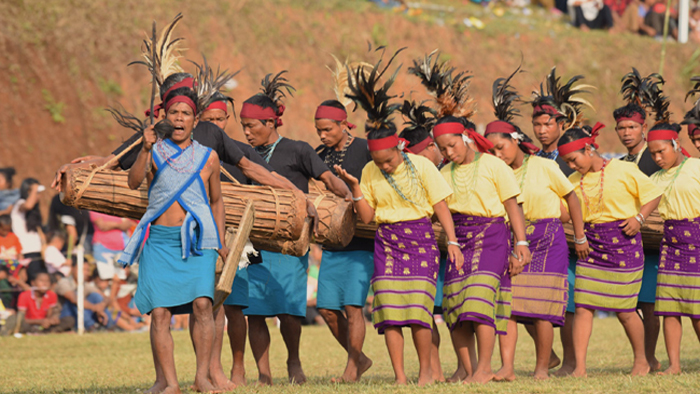
D. Music and Dance:
- Appreciate neighborhood music exhibitions, particularly in Shillong’s energetic bistros and music settings, displaying a combination of customary ancestral music, rock, and pop types.
- Festivals and cultural events feature performances of traditional dances like the Nongkrem Dance, Wangala Dance, and Ka Shad Mastieh, which provide a glimpse into the tribal heritage.
E. Interaction with Others:
- Draw in with the nearby networks through homestays and town visits to acquire experiences into their regular routines, customs, and customs.
- Experience the authentic tribal lifestyle by participating in community activities like farming, weaving, and cooking.
Meghalaya’s rich social legacy and energetic celebrations give a special open door to guests to drench themselves in the nearby customs, music, dance, cooking, and painstaking work. One can get a better understanding of Meghalaya’s cultural diversity and experience the true essence of the region by taking part in festivals and interacting with the welcoming tribes.
Practical Tips for Visiting Meghalaya During Monsoon
A. Weather and Clothing:
- Be ready for weighty precipitation and damp circumstances. Pack umbrellas, rain jackets, and clothing that dries quickly.
- Wear agreeable and durable footwear with great foothold to explore elusive ways and trails.
- Keep away from mosquitoes and leeches that are more active during the monsoon by bringing insect repellent with you.
B. Health and Safety:
- Before and during your trip, stay up to date on weather conditions, road closures, and travel warnings.
- Include basic medications and prescriptions in your first aid kit.
- Carrying a water bottle and drinking bottled or purified water will help you stay hydrated.
C. Transportation and Street Conditions:
- Because of weighty precipitation, street conditions might crumble, prompting infrequent avalanches or street terminations. Consider alternate routes and prepare for possible delays.
- Enlist experienced nearby drivers who are know all about the locale and its difficult territory.
D. Convenience and Reservations:
- Make reservations in advance for lodging, especially in popular tourist destinations, as there may be limited availability during the monsoon season.
- Pick facilities that are all around kept up with and have arrangements for rainstorm related difficulties, like legitimate waste and waterproofing.
E. Digital Photography and Equipment:
- Use waterproof covers or carry your cameras and other electronic devices in waterproof bags to keep them safe from water damage.
- Maintain a cleaning kit, memory cards, and additional batteries for your equipment.
F. Respect for the Environment and Culture of the Area:
- Regard the nearby traditions, customs, and social standards of the ancestral networks. Before taking pictures of people or religious sites, get permission first.
- By disposing of waste in a responsible manner and employing eco-friendly methods, you can maintain the environment’s cleanliness.
G. Insurance for Travel:
Travel insurance that covers medical emergencies, trip cancellations, and lost or damaged belongings is highly recommended.
H. Tour Operators and Local Guidance:
Hire local guides or tour operators who are familiar with the area and can tell you about the culture, safety tips, and the best places to go during the monsoon.
You can make the most of Meghalaya’s natural beauty and cultural experiences during the monsoon season if you follow these practical guidelines. To have a memorable and responsible journey, remember to place safety, respect for the environment, and local communities, first.
Conclusion
Visiting Meghalaya during the storm season offers a special and charming experience for voyagers. Meghalaya becomes a true paradise during this time period thanks to its breathtaking landscapes, lush vegetation, majestic waterfalls, and extensive cultural heritage. There are numerous opportunities for adventure, cultural exploration, and connecting with nature, including touring the rain-soaked forests of Cherrapunjee, experiencing the highest average rainfall in Mawsynram, and immersing oneself in Shillong’s vibrant culture.
However, being well-prepared for the monsoon conditions is essential. Bringing fitting dress, monitoring weather conditions refreshes, and guaranteeing security estimates will add to a smooth and charming excursion. Furthermore, regarding the neighborhood culture, drawing in with the ancestral networks, and rehearsing capable the travel industry will upgrade the experience and leave a positive effect.
Meghalaya during the monsoon promises a truly unforgettable journey, whether it’s trekking through mist-covered hills, witnessing the power of waterfalls, taking part in vibrant festivals, or enjoying traditional cuisine. So, take advantage of the beautiful weather and set out on an incredible journey to discover Meghalaya’s charm and wonders during this magical season.
FAQs
Is Meghalaya safe to visit during the monsoon?
While visiting Meghalaya during the storm can be a remarkable encounter, remaining refreshed on weather patterns and tourism warnings is significant. Choose knowledgeable local drivers for transportation and be wary of possible road closures or landslides.
What should I pack for a trip to Meghalaya during the monsoon?
Include a first-aid kit, umbrellas, rain jackets, sturdy footwear, insect repellent, and lightweight, quick-drying clothing. Waterproof covers for electronic devices are another option that should be considered.
Are there any specific precautions for trekking or outdoor activities during the monsoon in Meghalaya?
During rainstorm journey, heed the direction of experienced guides, wear suitable footwear with great foothold, and be wary of tricky ways. Keep an eye on the weather and don’t go hiking in landslide-prone areas.
What are the popular tourist destinations in Meghalaya during the monsoon?
Cherrapunjee, Mawsynram, Shillong, and public parks like Nokrek and Balpakram are well known objections during the storm. There are waterfalls, caves, cultural experiences, scenic beauty, opportunities for adventure, and other attractions in these locations.
Are there any specific cultural events or festivals held during the monsoon in Meghalaya?
Yes, during the monsoon, Meghalaya hosts the Wangala Festival, the Behdienkhlam Festival, and the Nongkrem Dance Festival. A one-of-a-kind cultural experience, these festivals feature tribal communities’ traditional music, dance, and rituals.







